This post contains affiliate links. Please see our disclosure policy.
Homemade from scratch Garam Masala Recipe from my Book Vegan Richa’s Indian Kitchen. “Garam” means hot and “Masala” in this context means blend of spices. Garam Masala spice blend is often used in Indian dishes to make sauces and curries. Find out how to make your own, to Roast or not to roast, where to buy, is it curry powder, what bay leaves and all you wanted to know about Garam Masala. Vegan Recipe. Pin this post.
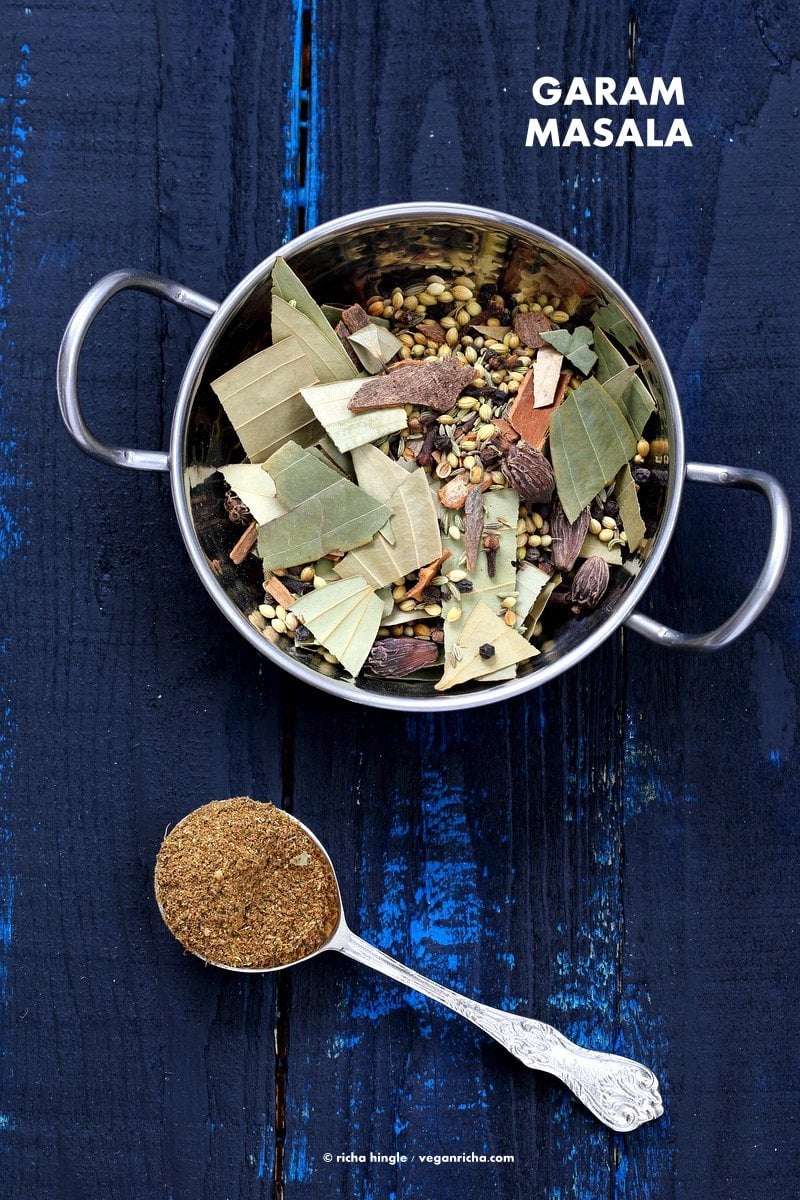
Garam Masala. What is Garam Masala? “Garam” means hot and “Masala” in this context means a blend of spices. Contrary to the direct meaning, the spice blend itself is not generally hot. It has black pepper but no red chile. It can however feel hot once you eat some. The spices together will warm you up from the inside. The flavor of garam masala is complex and strong and can be used in other cuisines as well.
Garam masala recipes vary by family recipes, regions, states within India and of course personal preference. Each restaurant also probably has their own version they prefer. Some similar spice blends have different names depending on the region as well. Kashmiri garam masala, Goda Masala, Rajasthani Garam masala etc. There there are other spice blends which are used for specific types of dishes like Pav bhaji masala (for snacks dishes), Sambhar masala(not garam masala but another spice blend used frequently in southern Indian dishes).
For the sake of simplicity, garam masala is a spice blend you would use to make a general Indian dish. Add it to veggies to make a veggie side, Add it to tomato based sauces to make a curry, add it to dals or chickpeas or beans and many more etc.
Speaking of spices, Its been 1 year since my book released, and what a roller coaster it has been. What started as niche book (Vegan and Indian) is working out so well for both categories and then some. #1 Best Seller in Indian all Year!! Good food wins! Thank you you all for cooking the recipes so well and loving the food.
I am giving away 2 signed copies of my book on this post (US only). To Enter, leave me a comment about the recipe from the book or blog that you have made multiple times the past year. Ends May 25.
Get your copy today in US and many other countries. Love the book? do leave reviews on amazon with your favorite recipes and experiences.
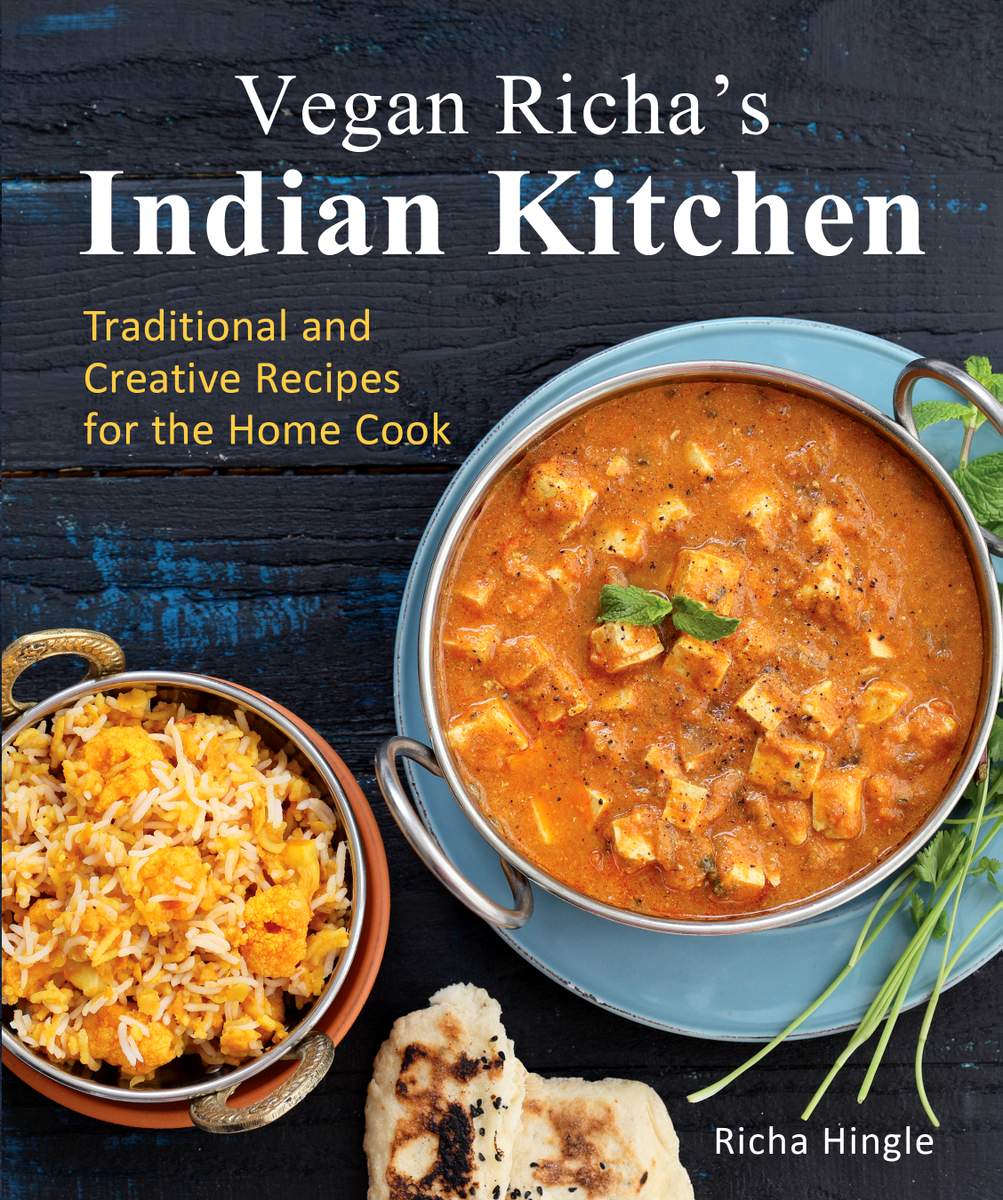
Back to garam masala, the flavorful and complex spice blend. Sometimes finding the right garam masala that you like, can be tricky. Read through these tips to get to know more about the spices, and the blend. Jump to Recipe
Check the Brand
If you buy garam masala, check the ingredients. Depending on the brands, country etc, the spice blend might have other additional flavors as all spice, more of cinnamon, more of cumin etc. I usually do not like any of the non Indian brand blends as many are very heavy on cinnamon or all spice giving is a completely different flavor profile.
You can make your own garam masala and adjust it to your preference (Recipe at the end of the post). Garam masala is also available in whole form. I usually get Swad or Deep Brand whole garam masala. I grind a small amount like a 1/4 to 1/2 cup and keep it to use in 1-2 months.
Check the Spices
If you make your own blend, check the spices. Old spices will make the whole blend stale. If you are unsure of if you will like the flavor profile, taste each spice individually before you blend them up. Or grind the spice you are unsure of separately. For eg black cardamoms can be an acquired flavor. Make smaller quantities of the garam masala blend, grind the spice you are not sure off separately and add less to begin with. Try the blended spice mix on a tofu scramble or dal to figure out how you like the flavor profile.
Bay Leaves
Indian Bay Leaves are different from regular bay leaves. Indian Bay Leaves have more of a cassia/cinnamony flavor profile and regular bay leaves have a more menthol like flavor profile. In smaller quantities, like 1 bay leaf in a big pot of stew or soup, the flavor might not be noticeable. But they form a good chunk of this garam masala recipe. You do not want to blend regular bay leaves into your garam masala!, or in any recipes that call for blending up the bay leaves (like my Navratan Korma from the book).
Cinnamon
There are many kinds of cinnamon available which have similar flavor profiles. Some are stronger and spicier while others are more fragrant. Some are the smooth inner bark and some all of the rough bark. The cinnamon that you get in Indian stores are the Indian or Srilankan cinnamon(Cinnamomum tamale or verum(ceylon cinnamon). Any of the cinnamon will do in the blend. Cinnamon sticks can be hard to grind, but they give a much fresher flavor. You can substitute cinnamon powder when making your own garam masala. Be sure to use fresh tasting ground cinnamon.
Other spice blends in the book.
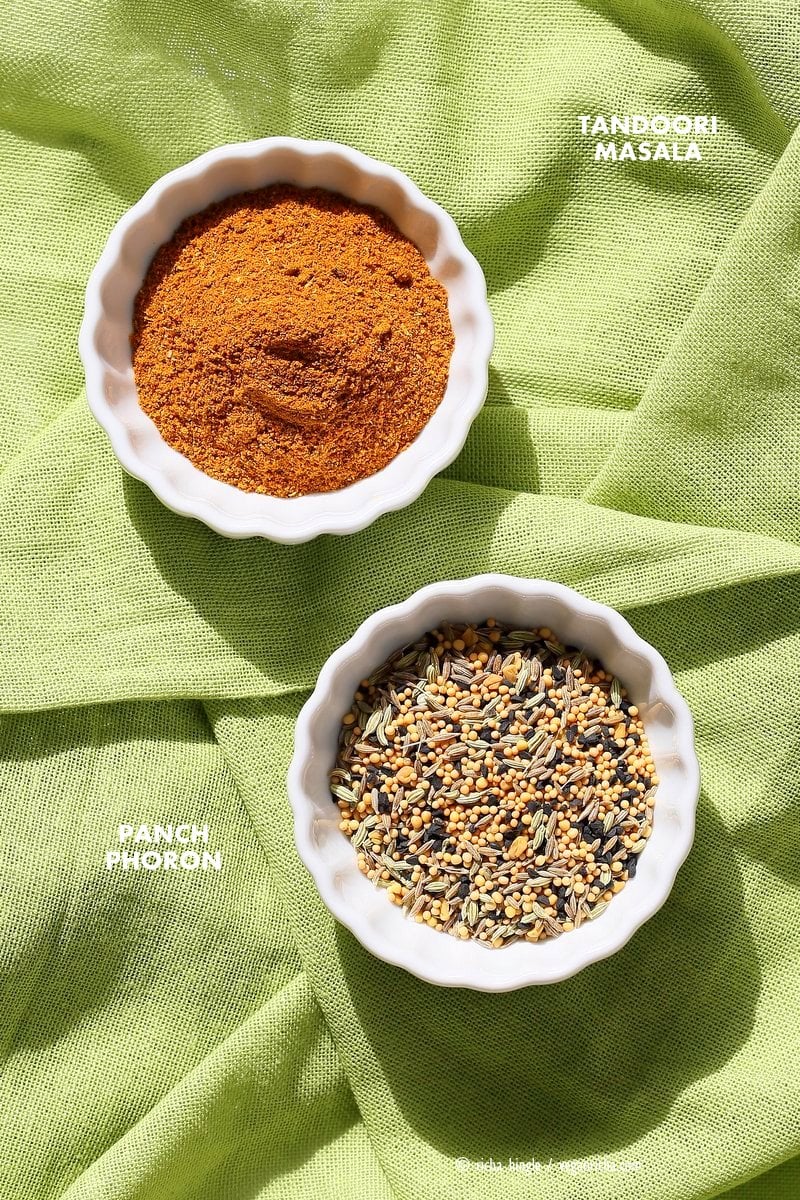
Roast/Toast or not Roast Garam Masala!!
Dry Roasting or toasting the spices is actually a personal preference. Gasp! Some recipes mention that you should toast them. Some others say don’t. Some others that are family recipes are by default toasted and no one knows why.
Toasting helps bring out some flavors more and mellow certain others. Sometimes the roasting also makes certain flavors much more stronger than others causing an imbalance in the harmony, like stronger cumin. Roasting coriander seeds takes away the fresh lime like flavor.
Why do recipes call for roasting? Most recipes have been in the family for generations. The spices often needed to be sun dried or lightly roasted to kill off germs or bugs(flour beetle eggs), or to dry them out because of the high humidity in the long humid monsoon season in India. Damp spices tend to spoil easily and make a clumpy spice blend. Times changed, but recipes didn’t.
So eventually it is personal preference. Try both lightly toasted and untoasted and see what you like. Sounds like a lot of work, but its a one time thing to find the recipe you really love. Or Just use the recipe below as is, or buy the whole garam masala from Indian store, if you are not particular.
Garam Masala is not Curry Powder
Curry powder is not garam masala and is never used in India. Curry powder is less flavorful and has turmeric and other additions that are usually not present in garam masala. Curry powder is a British or Western spice blend approximating the masala spice blends from north and south India. It works well as a spice blend to add to dishes, but is definitely not a traditional or authentic flavor profile. Use garam masala spice blend or the mentioned spices in Indian recipes. I generally buy or make whole spice garam masala as the whole spices stay fresh longer (upto 1 year).
And curry powder has nothing to do with curry leaves. Read more tips and some common mix ups here.
Use it
Garam masala can be used in various ways. Add it to the tempering and cook it in oil to toast and infuse the oil. Sprinkle some in a pot of soup and mix in. Use as a garnish right before serving. Add it to cookies, pancakes, shortbread. Add some wherever you use other spice blends. Toss some chickpeas in garam masala, salt and oil and bake to crisp for quick snacking.
In my Indian recipes, some people cut down on the heat and some spices, while many others double the spices and flavors. Any of these changes depend on a variety of reasons,
- how fresh are your ground spices, esp the garam masala flavor has a wide range depending on age, brand etc. I usually grind whole masala and use within 2-3 months. That makes mine very potent.
- if the recipe was changed to add more veggies or other ingredients, which would require more spices to flavor them.
- or just the simple reason that one might not be making Indian food every day or frequently, so when they do, they want to pack the flavor punch.
The good thing about Indian recipes is that you can adjust the flavors anytime during the simmering and right before serving as well. So adjust away.
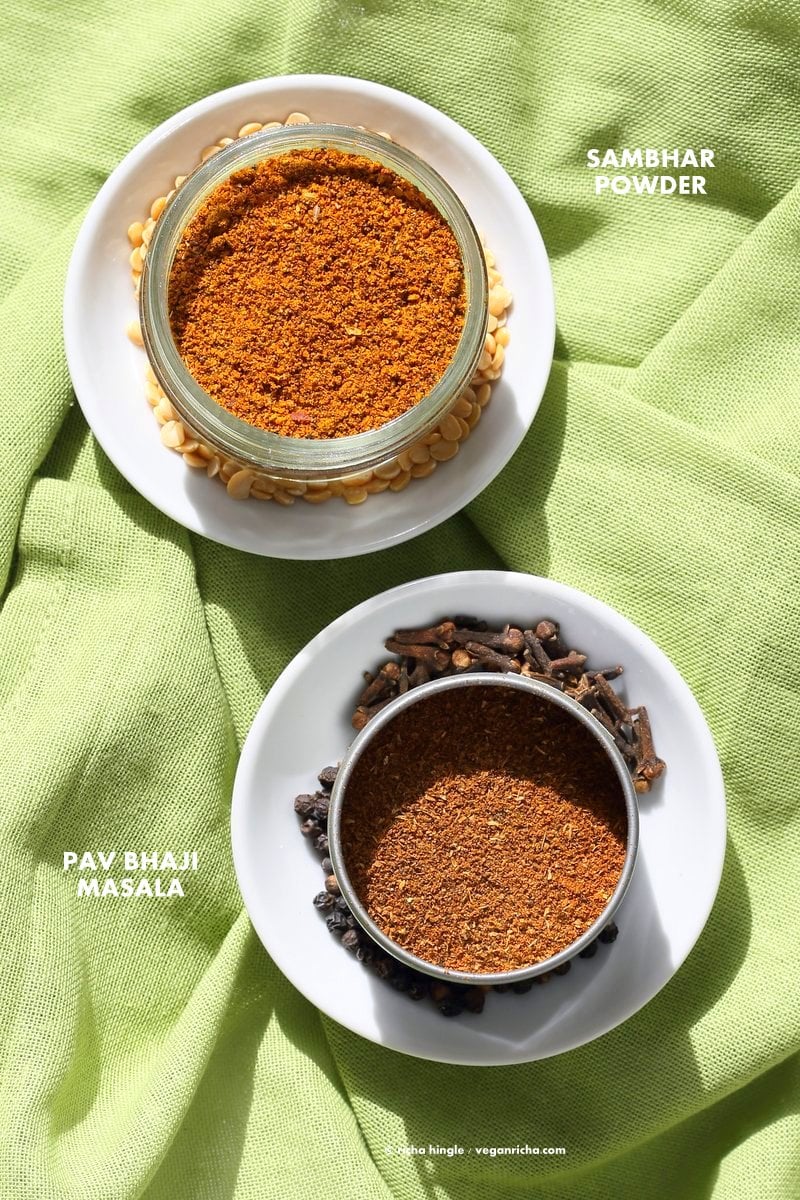
Lets Make some Garam Masala! Take this recipe and play with it to make a mix that you love. This recipe has evolved from my trials and mom’s general outline, so it is more of a Punjabi Garam Masala (north Indian). If you are uncertain of a certain spice, for eg black cardamoms can be an acquired flavor, make smaller quantities of the blend, grind the spice you are not sure off separately and add less to begin with. Let me know if you make some and love/not love it 🙂
Garam Masala Recipe
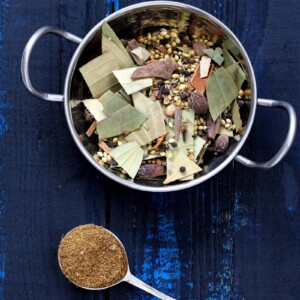
Ingredients
- 1/2 cup whole coriander seeds
- 1/4 cup cumin seeds
- 6 to 8 2-inch cinnamon sticks
- 8 to 10 black cardamoms
- 2 tablespoons green cardamom pods
- 2 tablespoons cloves
- 1 tablespoons black peppercorns
- 10 to 12 Indian bay leaves
- 1 nutmeg, optional
Instructions
- Combine all the ingredients and store in an airtight container for up to 1 year.
- To grind: In a spice grinder, grind the cinnamon sticks and nutmeg first until well ground, then add the rest of the spices and grind to a powder. Store in an airtight container for up to 3 months.
- Note: You can also roast the spices before blending. Dry roast all the ingredients except the nutmeg over low-medium heat for 4 to 5 minutes, stirring occasionally. Cool completely. Grind the cinnamon sticks and nutmeg, and then add the rest of the spices, grind and store as above.
Notes
1 tbsp ground cumin
2 tsp black pepper
3/4 tsp ground cloves
3/4 to 1 tsp ground cinnamon
1/2 tsp ground cardamom
1/4 tsp nutmeg Adjust the amounts to flavor preference if needed. Nutritional values based on one serving
Nutrition
Nutrition information is automatically calculated, so should only be used as an approximation.
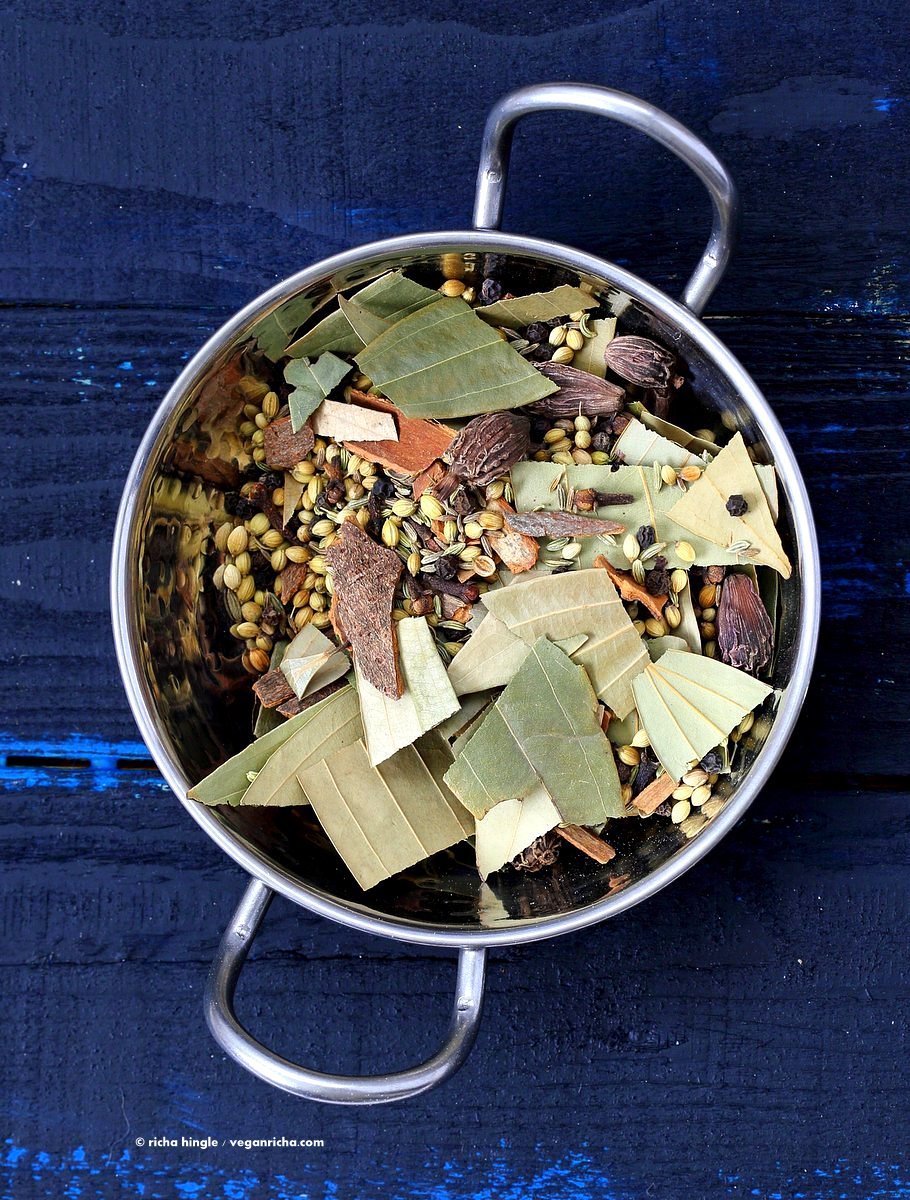
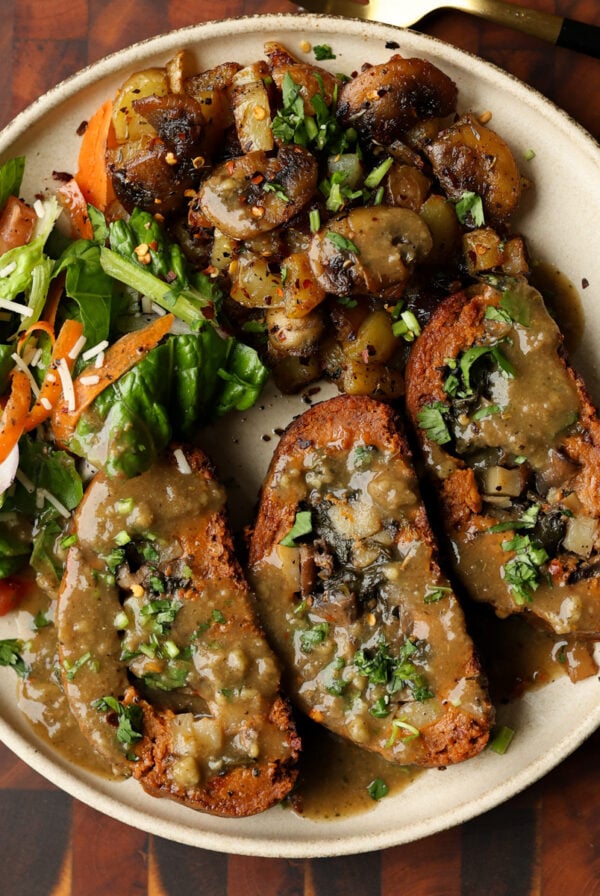
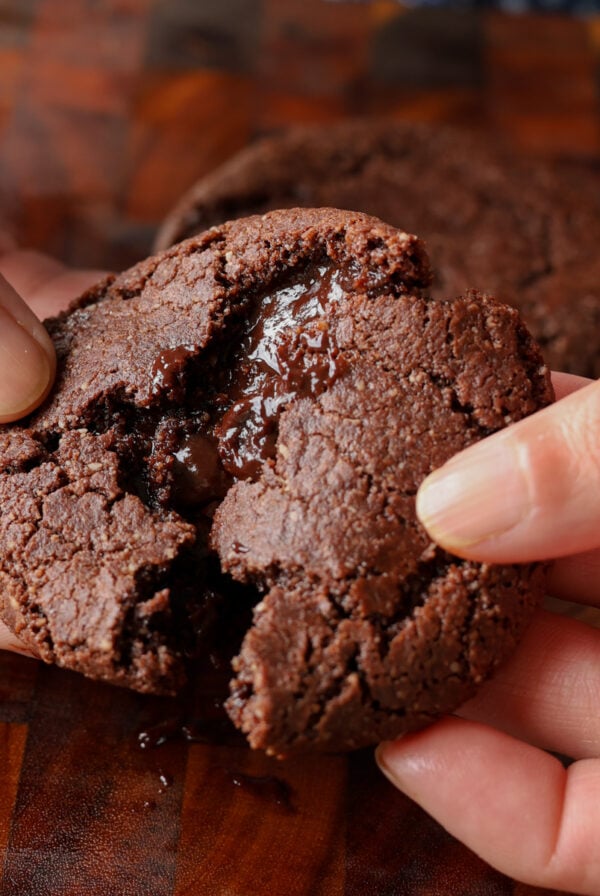
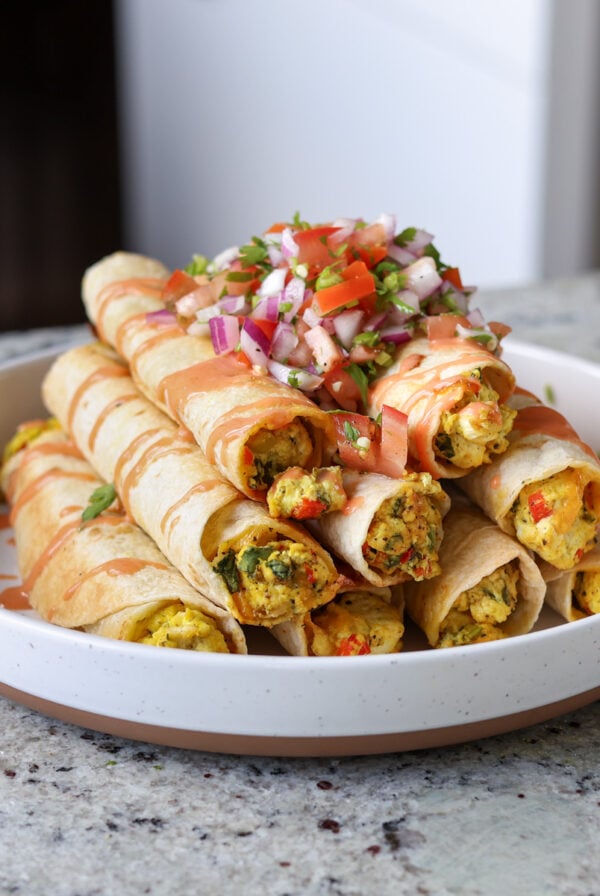
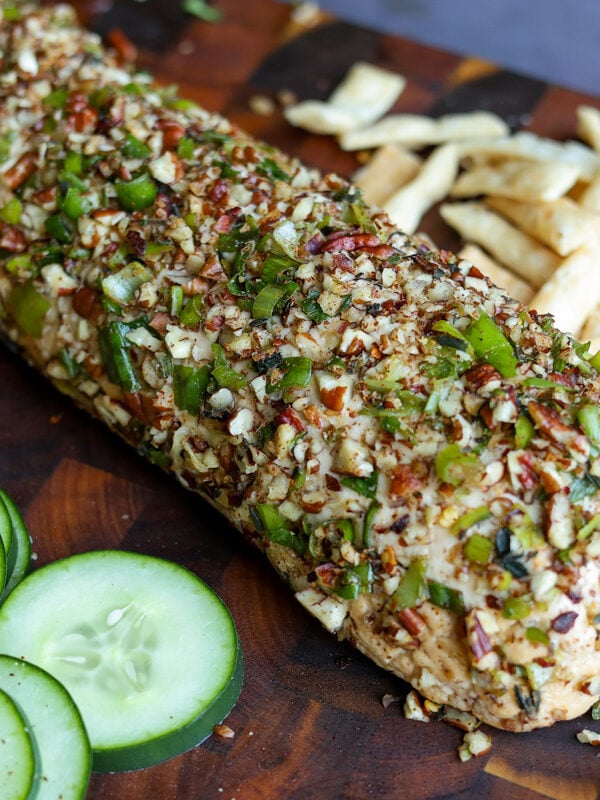






This recipe for garam masala looks worth trying . I have done numerous versions, and they’re always subject to the style of the authors, never the same twice. Such a cool thing to experience. This looks so tasty!
Thank you for this recipe … I love making my own spice blends. I also appreciate learning what the words garam and masala mean.
We’ve been enjoying many of your recipes but one of our all-time favorites is the Patta Gobi Chole recipe. I love cabbage and this is one of the most flavorful versions around. Thank you so much!
Your parathas! We need them to scoop up the sauces. Would like be looking veg to win cookbook thanks for giveaway. Fun to see other readers favorites, too.
I’ve been using Garam Masala for years and love the flavors. Thank you for educating us on Garam Masal and Curry spices, I always learn!
People, you HAVE to try the Biryani recipe from the book. It’s very good!
If only this was posted a week earlier! I just bought garam masala for the time, to make one of your chana dals actually. I had no idea what to look for! It sat in my car for a few hours, and I can still smell it when I get in there! I totally would have made my own if I had known what was in it. I have made you lentil kidney bean chili so many times…It became a favorite after come home from a hike in the cold rain!
This is my favorite vegan blog right now! I am charmed by you and your lovely food. Your recipes are so accessible, which is frankly unexpected in the world of Indian Vegan cuisine. I often have most of the ingredients on hand and if not can find something to substitute with. My go to recipe has been the Chickpeas in Tumeric Peanut Butter Curry. My (non vegan) 18 year old son ate the cold leftovers from the fridge one morning for breakfast and has requested it several times since. Its sooo good, better than most cafes. THANK YOU!
I came to buy your book finally, been following for ages. Found a giveaway! Our son came back from India and we fulfilled his reminiscing food fantasies with your blog. The only one we repeated was easy jackfruit curry. Excellent.
I’ve been loving your turmeric lemon rice recipe the most lately. Most of your food pics I just want to eat right through my screen! I would love to have your cookbook!! <3
We love the avocado naan! Thanks for the chance to win your amazing cookbook